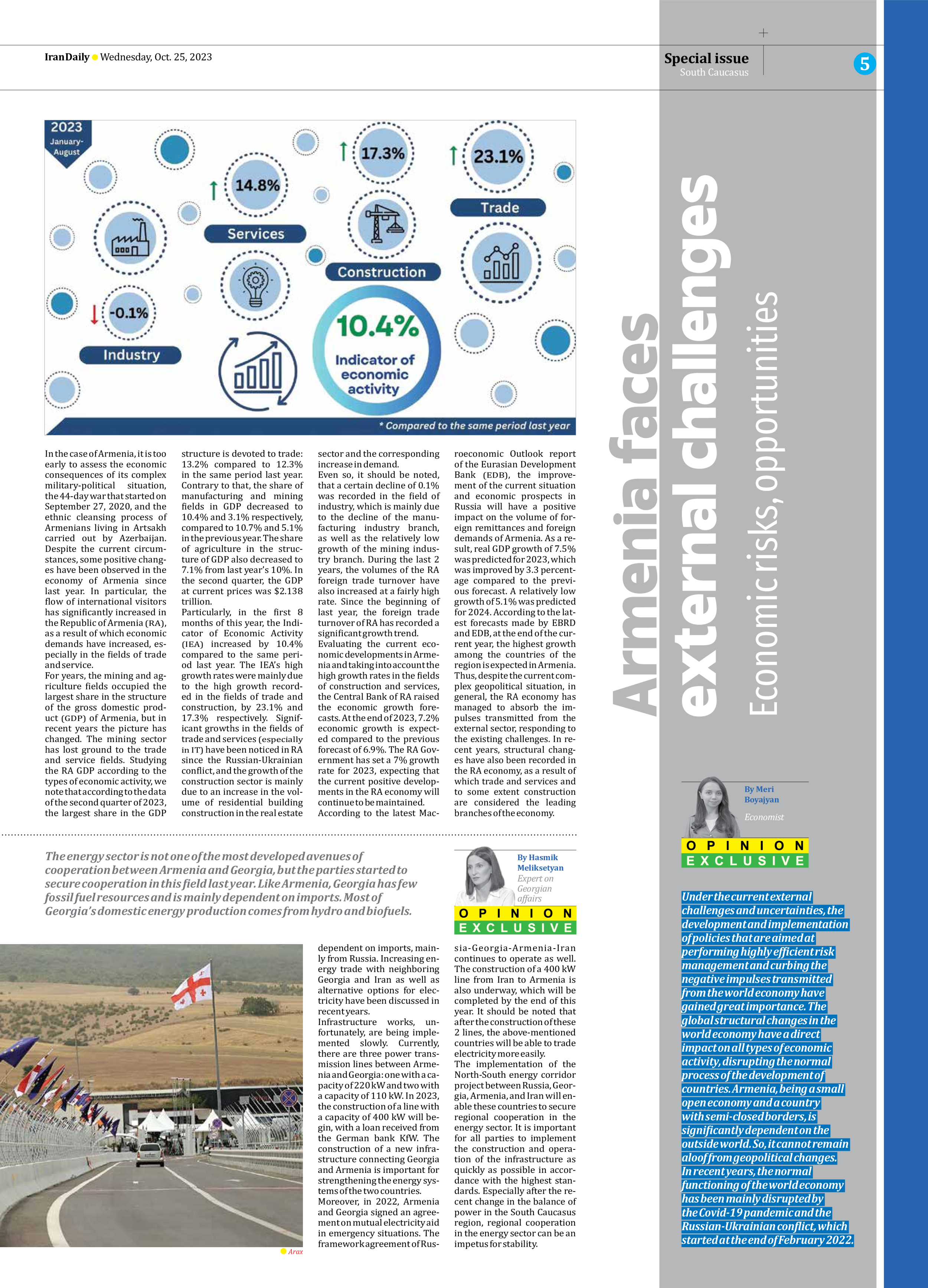
Armenia faces external challenges
Economic risks, opportunities
By Meri Boyajyan
Economist
Under the current external challenges and uncertainties, the development and implementation of policies that are aimed at performing highly efficient risk management and curbing the negative impulses transmitted from the world economy have gained great importance. The global structural changes in the world economy have a direct impact on all types of economic activity, disrupting the normal process of the development of countries. Armenia, being a small open economy and a country with semi-closed borders, is significantly dependent on the outside world. So, it cannot remain aloof from geopolitical changes.
In recent years, the normal functioning of the world economy has been mainly disrupted by the Covid-19 pandemic and the Russian-Ukrainian conflict, which started at the end of February 2022.
In the case of Armenia, it is too early to assess the economic consequences of its complex military-political situation, the 44-day war that started on September 27, 2020, and the ethnic cleansing process of Armenians living in Artsakh carried out by Azerbaijan. Despite the current circumstances, some positive changes have been observed in the economy of Armenia since last year. In particular, the flow of international visitors has significantly increased in the Republic of Armenia (RA), as a result of which economic demands have increased, especially in the fields of trade and service.
For years, the mining and agriculture fields occupied the largest share in the structure of the gross domestic product (GDP) of Armenia, but in recent years the picture has changed. The mining sector has lost ground to the trade and service fields. Studying the RA GDP according to the types of economic activity, we note that according to the data of the second quarter of 2023, the largest share in the GDP structure is devoted to trade: 13.2% compared to 12.3% in the same period last year. Contrary to that, the share of manufacturing and mining fields in GDP decreased to 10.4% and 3.1% respectively, compared to 10.7% and 5.1% in the previous year. The share of agriculture in the structure of GDP also decreased to 7.1% from last year’s 10%. In the second quarter, the GDP at current prices was $2.138 trillion.
Particularly, in the first 8 months of this year, the Indicator of Economic Activity (IEA) increased by 10.4% compared to the same period last year. The IEA’s high growth rates were mainly due to the high growth recorded in the fields of trade and construction, by 23.1% and 17.3% respectively. Significant growths in the fields of trade and services (especially in IT) have been noticed in RA since the Russian-Ukrainian conflict, and the growth of the construction sector is mainly due to an increase in the volume of residential building construction in the real estate sector and the corresponding increase in demand.
Even so, it should be noted, that a certain decline of 0.1% was recorded in the field of industry, which is mainly due to the decline of the manufacturing industry branch, as well as the relatively low growth of the mining industry branch. During the last 2 years, the volumes of the RA foreign trade turnover have also increased at a fairly high rate. Since the beginning of last year, the foreign trade turnover of RA has recorded a significant growth trend.
Evaluating the current economic developments in Armenia and taking into account the high growth rates in the fields of construction and services, the Central Bank of RA raised the economic growth forecasts. At the end of 2023, 7.2% economic growth is expected compared to the previous forecast of 6.9%. The RA Government has set a 7% growth rate for 2023, expecting that the current positive developments in the RA economy will continue to be maintained.
According to the latest Macroeconomic Outlook report of the Eurasian Development Bank (EDB), the improvement of the current situation and economic prospects in Russia will have a positive impact on the volume of foreign remittances and foreign demands of Armenia. As a result, real GDP growth of 7.5% was predicted for 2023, which was improved by 3.3 percentage compared to the previous forecast. A relatively low growth of 5.1% was predicted for 2024. According to the latest forecasts made by EBRD and EDB, at the end of the current year, the highest growth among the countries of the region is expected in Armenia.
Thus, despite the current complex geopolitical situation, in general, the RA economy has managed to absorb the impulses transmitted from the external sector, responding to the existing challenges. In recent years, structural changes have also been recorded in the RA economy, as a result of which trade and services and to some extent construction are considered the leading branches of the economy.







